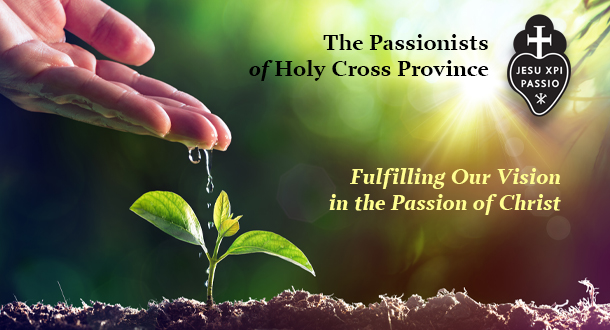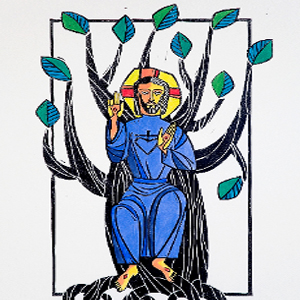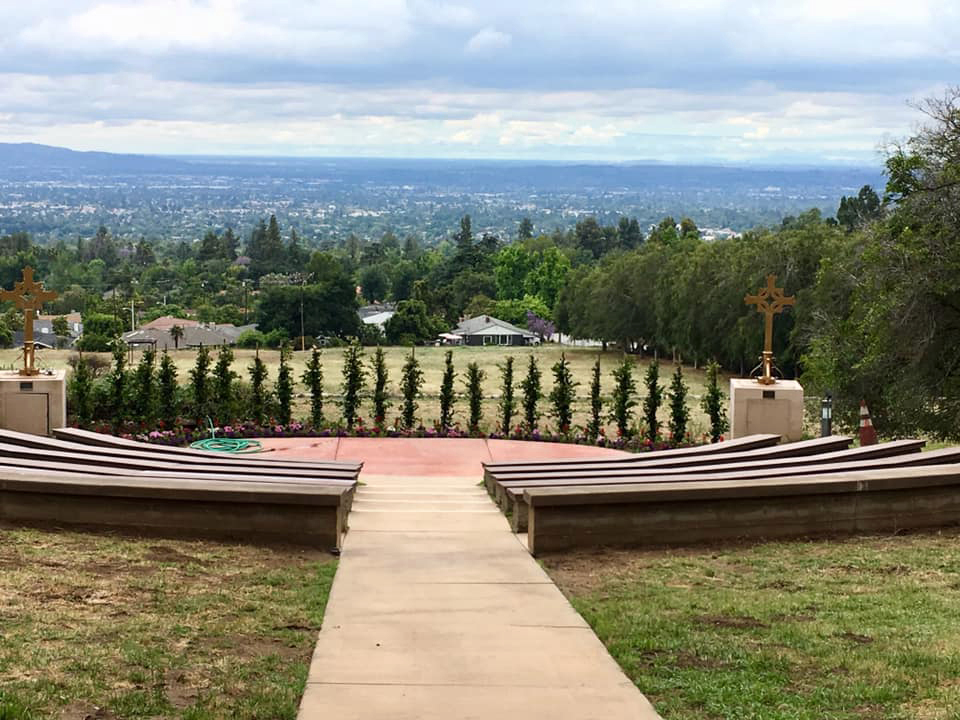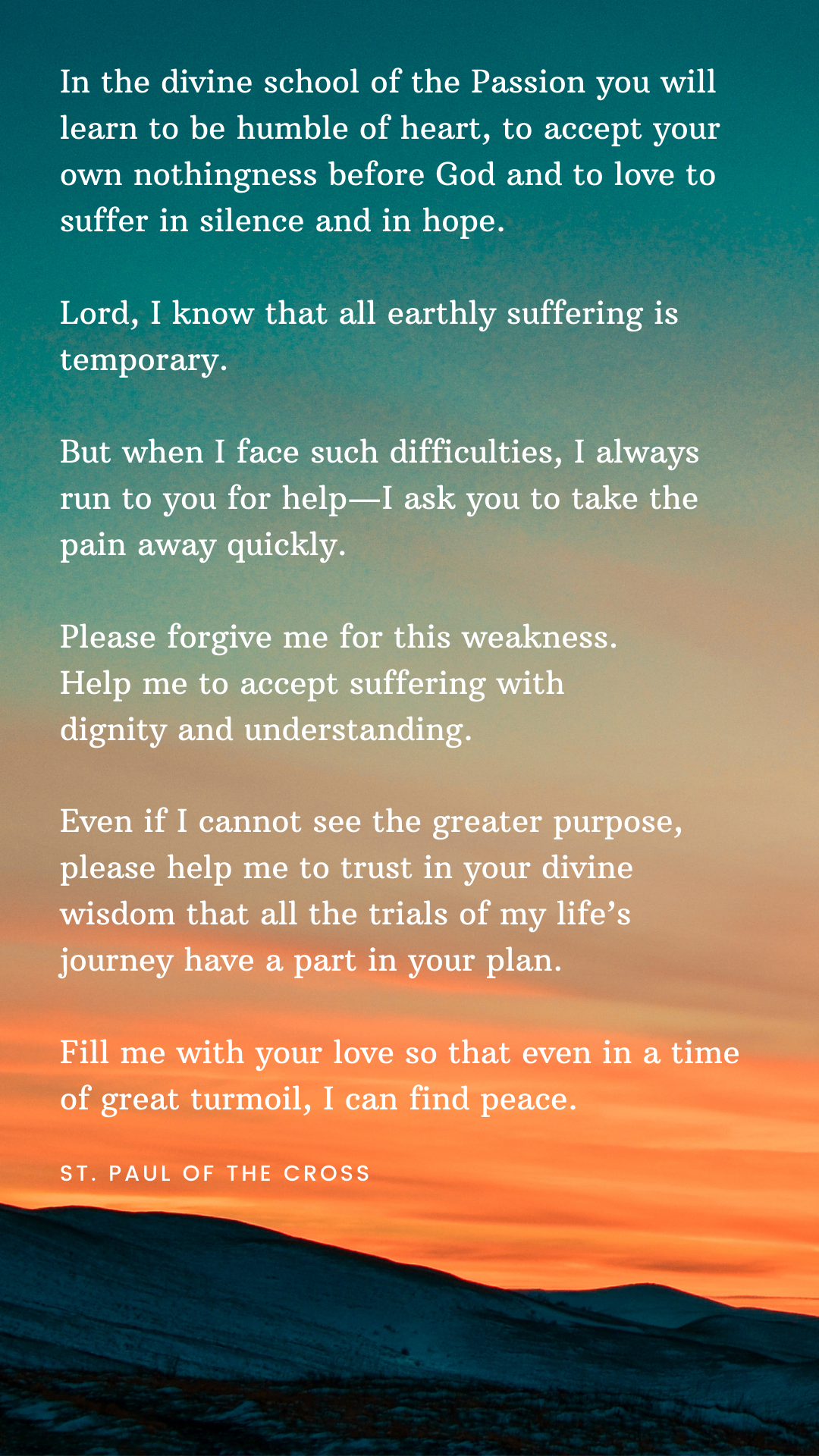
Communicating with Passion
November 5, 2020
IN THIS ISSUE
- Leadership Commission Update
- Mater Dolorosa Passionist Retreat Center Featured as Election Day Respite
- Online spiritual direction
- Transfomative Communities Series: Generative Designers of the Future
(Part 4) - A Passionist Prayer from St. Paul of the Cross
I am the vine,
you are the branches.
Whoever remains in me and I in him will bear much fruit,
because without me
you can do nothing.
(John 15:5, NABRE)
The Vine and Branches
by Br. Michael Moran, CP

The image of Jesus from this scripture graces Mater Dolorosa Passionist Retreat Center and has inspired retreatants since 2008. It remains an inspiration for us today as we continue our visionary journey.
A Leadership Commission was created based on a proposal by the Leadership Vision Fulfillment Team. As a result of conversations with the Provincial and his Council, the Leadership Commission is working on a proposal to create an initiative to provide education and training in conjunction with the formation work developed by the Office of Mission Effectiveness.
Members of the Leadership Commission are:
- Jean Bowler
- Joe Castro
- Tim O’Brien (co-chair)
- Fr. Phil Paxton, CP
- Keith Zekind (co-chair)
The Leadership Commission has been meeting regularly since mid-September and has created a statement of purpose that can be acted upon:
- The overall purpose is to develop leaders, support staff, volunteers, board members, vowed and lay, for the future of Holy Cross Province.
- To define the uniqueness of Passionist Leadership and its characteristics. This includes both spiritual and practical levels of leadership and service.
- To develop and deliver leadership training across all levels of engagement with the Passionist Mission.
- To work closely with the Office of Mission Effectiveness to assure coordinated leadership formation and education programs in Holy Cross Province.
- To develop Servant Leadership training as foundational to the Passionist Family.
- To review Project Proposals that have been developed during the Vision Fulfillment Process and develop leadership programs in support of initiatives as needed.
- To develop curriculum for leadership development programs as well as metrics to measure effectiveness of training.
We have adopted the image of The Vine and Branches to guide and inspire our efforts. Jesus and the Passionist Charism is at the core of everything we do, and the branches represent the various organizations and members of the Passionist Family that we intend to serve. We are in the early stages of a comprehensive effort and seek the guidance of The Holy Spirit in all our work.
Mater Dolorosa Passionist
Retreat Center
Featured as Election Day Respite

Mater Dolorosa Passionist Retreat Center was recently featured in an article highlighting the new Los Angeles Retreat Center Community (LARCC).
The LARCC is a collaboration of five retreat centers in the Los Angeles area that offer both online retreats and personal self-directed retreats. The group was formed in response to the COVID-19 pandemic and the cooperative efforts of the centers to find innovative ways to provide retreats.
“We have been working collaboratively during the crisis, sharing information and practices to try and respond as effectively as we can to an unprecedented situation,” said Mike Cunningham, retreat center director at Mater Dolorosa in Sierra Madre.
One of the Project Proposals from the Charism Formation Vision Fulfillment Team is creating a system to offer Spiritual Direction online.
“A standard practice of online spiritual direction be established with a specific pool of trained spiritual directors who are comfortable with this format. Because it is online, the spiritual directors can be located at various locations. We recommend that Passionist spiritual directors gather to establish online spiritual direction guidelines as well as formatting., i.e. how people sign up, who ‘pairs’ spiritual and directees, how payment is handled, specific considerations, orientation session, etc.“
If you are interested in being a part of a committee to create the structure that would facilitate online Spiritual Direction, please email Marci Madary: [email protected].
Transformative Communities Series:
Generative Designers of the Future
Part 4 of 5
By Mark Clarke
Part II: Visionary Direction
Antoine de Saint-Exupery states, “If you want to build a ship, don’t gather people together to collect wood and don’t assign them tasks and work, but rather teach them to long for the immensity of the sea.” Regenerative Leadership.6
The creation of a visionary direction requires the active engagement of choosing a future. Transformative Communities see themselves as designers and creators of the future. They are open to the blank canvas method as they explore the ‘what if’ questions for imaging a preferred future.
The canvas begins to take shape by choosing a path. As the world continually disrupts, members accept the call to envision a new future for themselves. The hard reality is that in these times, the status quo will not take a group to an envisioned future. Transformative Communities are rooted in seeing themselves as the disciples of the Acts of the Apostles. After the death of Jesus, they recognized through their life-altering experience of his death that they needed to imagine a community grounded in his teaching. As they entered the depth and sorrow of the loss, they dreamed of a new world. Their walking into the pain and embracing the passionate energy, Jesus' mission opened their hearts to a new purpose. This pilgrimage is the journey of every transformative community.
A shared vision focuses on the transformative community's deepest aspiration while aligning all the members and systems in a communal direction. In a time of rapid change and shifting paradigms and society mental frameworks, a shared vision offers stability. Since unforeseen events can disrupt a community, foresight is an indispensable asset. Scripture reminds us, “without vision, the people perish.”7 This quest is a profound spiritual path requiring transformation. New or adapted directions by their very nature demand change. Collective adjustments are not easy as a group takes competing beliefs, ideas, and concerns and combines them to form a unified path. This dynamic demands both individual and group, letting go to create a shared vision. It is not a comfortable journey and should be assisted by a contemplative space that is safe and receptive to the many ideas and desires that will develop a unity about the future.
This moment in history, with its myriad of transitions, demands that communities create a bold vision. Ilia Delio, in her book, The Emergent Christ, speaks to the value of change.
“Life means change, and the rich diversity of life is based on change.
One does not have to be trained in science to realize that change
is integral to life. All of life follows the cycle of birth, maturity, deterioration, and death.”8
The quote reminds us that openness to change is necessary, that creating a group vision is not a rigid process rather an organic and energetic one to open to the polarity dance of the known and unknown. A profound spiritual process of radical detachment is needed to embrace the hidden invitation of God. We often tend to create a direction based on security rather than aspiration. The book, Beyond Performance, notes “If the vision feels to incremental, cautious, or overly tailored to existing capabilities, it will fail to create momentum or pressure for an organization to push the limits of what is possible and therefore won’t lead to breakthroughs.” 9
The essential questions a transformative community needs to ask in creating a collective vision are:
- Who are we called to serve?
- What is our prophetic stance?
- What is our desired impact and shared commitment to creating a just society?
When developing a vision, it is critical to envision the direction for a decade. It is critical to realize the vision will be implemented based on incremental steps that focus on the long term vision. One of the great examples of a visionary direction is John Kennedy's vision for our space program. The vision was to land a person on the moon by the end of the decade and return them safely to earth. The vast information that authors have written on the moon project demonstrates the aspiration was always in front of these pioneers as they took incremental steps.
For example, the moon shot was a three-phase space program: Mercury, Gemini, and Apollo. Each program focused on essential elements vital to achieving the ultimate goal of landing on the moon. Mercury experimented with all the details needed to send a person in space and return them safely to earth. Gemini explored the critical steps needed to walk in space, rendezvous with another spaceship, and other critical elements. Finally, Apollo would land the person on the moon and bring them safely home. The vision took each of these expansive steps to be successful.
Habakkuk 2:2 states, “Write down the vision clearly upon the tablets so that one can read it readily.”10 This wisdom is true for transformative communities about the importance of continually having a vision.
Each transformative community is called by God to express clearly their moonshot vision, one that transforms both the individual and collective members and society. This demand for creating a bold plan of action and congregational alignment that implements the dream.
6 Sanford. 72
7 MEV Proverbs 29:18
8 Delio, Ilia. The Emergent Christ: Exploring the Meaning of Catholic in an Evolutionary Universe. Orbis Books, 2013. Print. 34
9 Keller, Scott, and Bill Schaninger. Beyond Performance 2.0: a Proven Approach to Leading Large-Scale Change. John Wiley & Sons, Inc., 2019. Print. 66
10 NAB Saint Joseph Edition
Holy Cross Province Vision Statement
Guided by the Holy Spirit and the signs of the times,
we create and carry out ministry that reaches
the suffering of today and form community
that spiritually nourishes the
Passionist Family of Holy Cross Province.

If you would like to share your thoughts, ideas or reactions from anything in this newsletter, we would love to hear from you!
Send your thoughts to
[email protected]
Copyright © 2020 All rights reserved.
